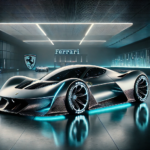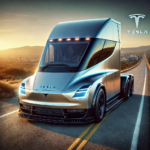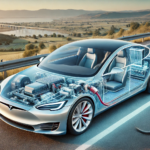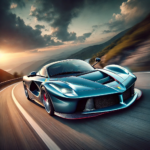Introduction
Tesla’s journey toward full self-driving (FSD) has been one of the most ambitious technological advancements in the automotive industry. Since the introduction of Autopilot and FSD Beta, Tesla has continuously pushed the boundaries of artificial intelligence and autonomous vehicle capabilities. As we step into 2025, Tesla has made significant improvements in its Full Self-Driving technology, but the big question remains: is full autonomy finally here?
In this blog, we’ll explore Tesla’s latest advancements in self-driving, real-world performance, regulatory challenges, and what this means for the future of autonomous driving.
The Evolution of Tesla’s Self-Driving Technology
Tesla’s self-driving journey began with Autopilot, an advanced driver-assist system introduced in 2015. Over the years, Tesla developed the Full Self-Driving (FSD) Beta, which promised near-autonomous capabilities under human supervision. As we enter 2025, Tesla has rolled out several updates aimed at achieving Level 4 or even Level 5 autonomy.

Key Milestones in Tesla’s Self-Driving Evolution:
- 2015: Introduction of Autopilot (Level 2 autonomy)
- 2019: Tesla launches FSD Beta
- 2023-2024: Neural network improvements and expanded real-world testing
- 2025: Enhanced FSD capabilities with AI-driven decision-making
Tesla’s self-driving AI now relies on advanced neural networks, real-time data processing, and Tesla Vision, eliminating the need for LiDAR and radar sensors.
Tesla FSD 2025: Features and Enhancements
Tesla has made major strides in 2025, introducing FSD v12, which offers a more human-like driving experience. Here are the latest features and improvements:
1. End-to-End Neural Networks
Tesla has moved away from traditional rule-based programming and now utilizes AI-powered neural networks that mimic human driving behavior. This means smoother lane changes, better handling of complex urban environments, and improved reactions to unpredictable scenarios.
2. Full City and Highway Autonomy
With the latest FSD update, Tesla vehicles can navigate both highways and city streets with minimal driver intervention. The improved system includes automatic turns, roundabout navigation, and advanced pedestrian detection.
3. Tesla Vision: No More Radar or LiDAR
Tesla has fully transitioned to camera-based perception, making self-driving more efficient. The company believes its AI can outperform traditional sensor-based systems, improving performance in various weather conditions.
4. Enhanced Summon and Auto-Parking
New updates allow Tesla owners to summon their cars from a parking lot using just their phone, and the Auto-Park feature can handle even the tightest spaces with improved precision.
5. Tesla Robotaxi Integration
One of the most anticipated developments of 2025 is the Tesla Robotaxi network, allowing Tesla owners to rent out their autonomous vehicles, generating passive income while contributing to a future without car ownership.
Real-World Performance: Is Tesla’s FSD Truly Autonomous?
Despite these impressive advancements, Tesla’s Full Self-Driving is not yet at Level 5 autonomy—meaning it still requires human supervision. However, real-world tests indicate massive improvements in handling unprotected left turns, roundabouts, merging onto highways, and recognizing emergency vehicles.
Driver Experiences & Feedback
Early adopters of Tesla’s FSD v12 report: ✅ Smoother acceleration and braking ✅ Better response to cyclists and pedestrians ✅ More natural lane positioning ❌ Occasional hesitation at complex intersections ❌ Some challenges in extreme weather conditions
While Tesla FSD has significantly improved, full autonomy still depends on regulatory approval and AI refinement.
Regulatory and Legal Challenges
One of the biggest hurdles Tesla faces is government regulations. Different countries and states have varying rules about autonomous vehicles, and Tesla must comply with these legal frameworks before FSD can operate without human supervision.
Key Regulatory Challenges in 2025
- U.S. Regulations: The NHTSA and DOT require safety validation before approving full autonomy.
- Europe’s Strict Laws: The EU demands extensive testing before allowing autonomous features.
- China’s AI Restrictions: Tesla must align with China’s regulations on AI-powered vehicles.
Until these issues are resolved, Tesla FSD will remain in supervised autonomy mode rather than full self-driving.
Tesla vs. the Competition: Who Leads the Self-Driving Race?
Tesla is not the only player in the self-driving industry. Companies like Waymo, Cruise, and Mercedes-Benz are also advancing their autonomous technologies. Here’s how Tesla compares in 2025:
| Feature | Tesla FSD | Waymo | Cruise | Mercedes Drive Pilot |
|---|---|---|---|---|
| Highway Autonomy | ✅ Yes | ✅ Yes | ✅ Yes | ✅ Yes |
| City Street Navigation | ✅ Yes | ❌ No | ✅ Yes | ❌ No |
| Full Autonomy (No Driver) | ❌ No | ✅ Yes | ✅ Yes | ❌ No |
| Consumer Availability | ✅ Available | ❌ Limited | ❌ Limited | ✅ Available (Limited) |
Tesla’s key advantage is its mass-market approach—unlike Waymo and Cruise, which rely on geofenced operations, Tesla aims to bring autonomy to everyday drivers.
The Future of Tesla Self-Driving: What’s Next?
While Tesla hasn’t reached full autonomy in 2025, it is closer than ever. Here’s what we can expect in the coming years:
🔹 FSD v13 & Beyond: More refined AI-driven decision-making 🔹 Increased Regulatory Approvals: Countries adapting policies for self-driving cars 🔹 Robotaxi Expansion: Wider deployment of Tesla’s autonomous fleet 🔹 Integration with AI & Smart Cities: Vehicles communicating with traffic systems
Tesla is continuously improving its self-driving software, and full autonomy may be achievable by 2026-2027, depending on AI development and legal approvals.
Conclusion: Is Tesla Self-Driving Worth It in 2025?
Tesla’s Full Self-Driving in 2025 is more advanced than ever, with enhanced AI capabilities and improved real-world performance. However, it is still not fully autonomous, requiring human supervision. While FSD is an exciting glimpse into the future, whether it’s worth the investment depends on your driving needs and willingness to embrace cutting-edge technology.
As Tesla continues refining its self-driving system, the dream of Level 5 autonomy is closer than ever—but still just out of reach. Whether 2025 will be the year Tesla achieves full autonomy remains uncertain, but one thing is clear: the future of self-driving is unfolding right before our eyes.
🚘 What Do You Think?
Would you trust a fully autonomous Tesla in 2025? Let us know in the comments!








